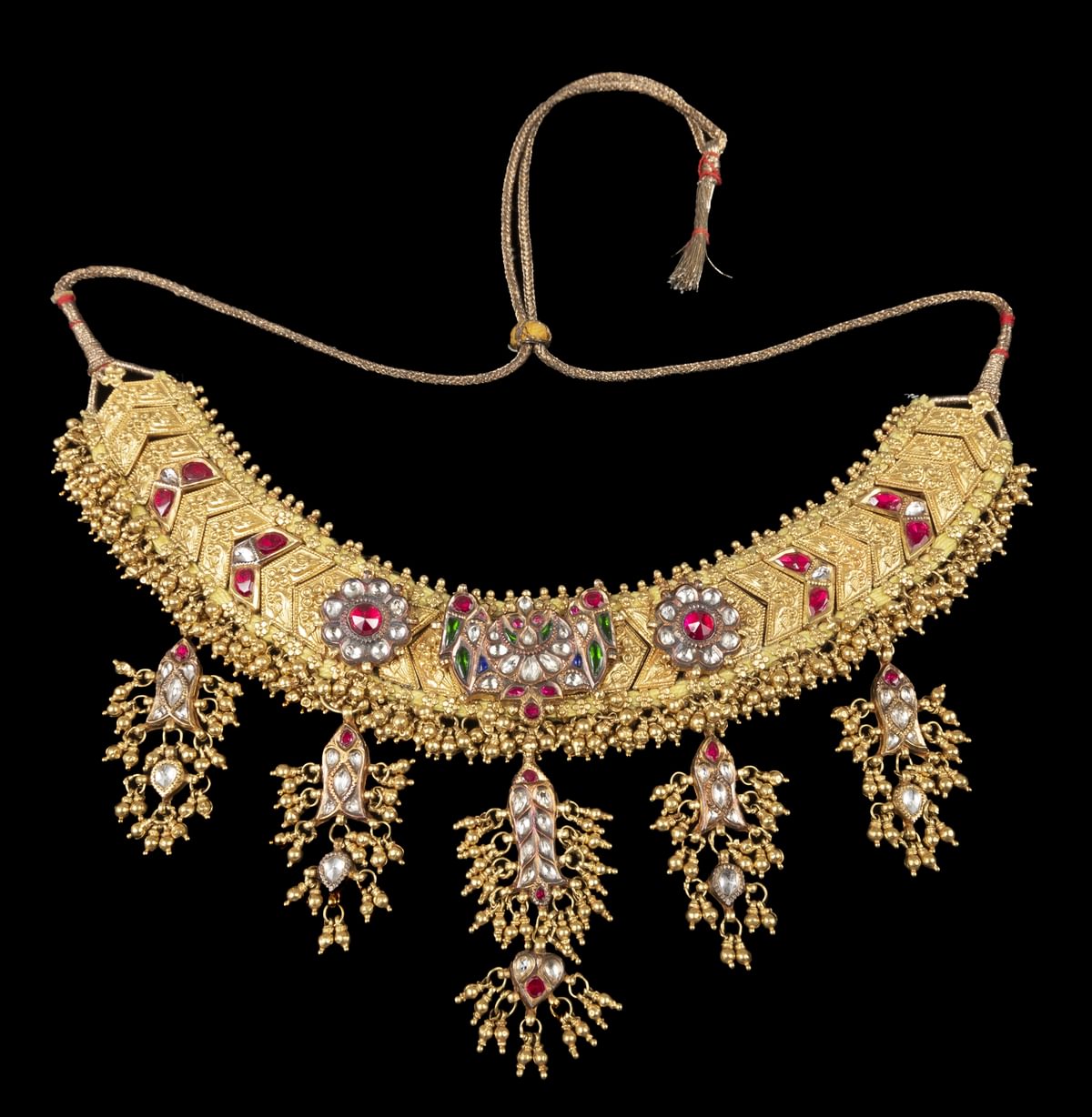
South India, Karnataka/Maharashtra. Tussi/Thushi Necklace, late 19th century. Gold, precious stones, 19 in. Gift of Dr. Prasad and Jayashree Kommareddi. 2021.277
Meditations in Gold: South Asian Jewelry
May 16, 2024 - February 2, 2025
Ann K. Walch-Chan GalleryFrom prehistoric necklaces made of shells and bones to contemporary ornaments of gold and gemstones, jewelry is a universal form of adornment and one of the most accessible forms of art. Since the beginning it has had many functions; to represent cultural beliefs, to indicate status and wealth, to act as a fashion statement, to serve religious purposes, to symbolize relationships and rites of passage, to serve as a type of currency, and as heirlooms connecting families to their heritage, or in some cases to protect the wearer.
With its own mines yielding gold, diamonds, and many other precious and semiprecious stones India has been a vibrant center for wearable arts for centuries. Whether it is an opulent creation covering much of the body or a simple amulet worn around the neck on a cotton string, every detail holds important cultural connections. This exhibition will include jewelry worn for religious, ceremonial, and daily purposes and because every element of jewelry design in India is intentional, it will consider the importance of motifs from the natural and spiritual world. It will also explore why materials—like gold and pearls—are deeply symbolic and how they are utilized to create meaning beyond aesthetics.
Related Programming:
Splendors of South Asia
Saturday, October 19, 2024 | 6:00pm
Free and open to the public. Registration required
7:00pm - Exclusive Cocktail Reception & Intimate Dinner
Ticketed event, sponsorship opportunities available.
Dress Code: Cocktail/party attire, traditional South Asian attire encouraged
The Flint Institute of Arts Museum + Art School (FIA) is pleased to announce the first ever Splendors of South Asia celebration scheduled for Saturday, October 19, 2024. The event celebrates the art, history, and culture of South Asia and aims to further the FIA’s mission of connecting diverse communities through fun, creative and inspiring visual art experiences. The springboard for the Splendors of South Asia celebration began in 2021 with the Kommareddi Family Lecture series and continues with the Meditations in Gold: South Asian Jewelry exhibition on view from May 16, 2024 to February 2, 2025. The evening will feature a lecture that is free and open to the public, followed by a ticketed event that includes cocktails in the museum and an intimate dinner in Isabel Hall. Proceeds from the celebration will support education programs and expand the South Asian art collection at the FIA.
[Click here for event registration]
From the Exhibition




Indian Period Gemset 'Hasli' or Necklace, ca. 1930. Gold, sapphires, pearls, emerald cabochons, 20 in. Museum purchase with funds donated by Dr. Prasad and Jayashree Kommareddi 2021.191
Indian Period Gemset 'Maang Tika' or Forehead Ornament, ca. 1930. Gold, pearls, tourmalines, enamel. 2 1/2 x 3 in. Museum purchase with funds donated by Dr. Prasad and Jayashree Kommareddi 2021.190
West India, Rajasthan Bangles (bangri), late 19th/early 20th century. Gold, diamonds, enamel. Private collection.
North India, Calcutta or Delhi Combs (kangi), early 20th century. Gold, emeralds, diamonds. Private collection.


